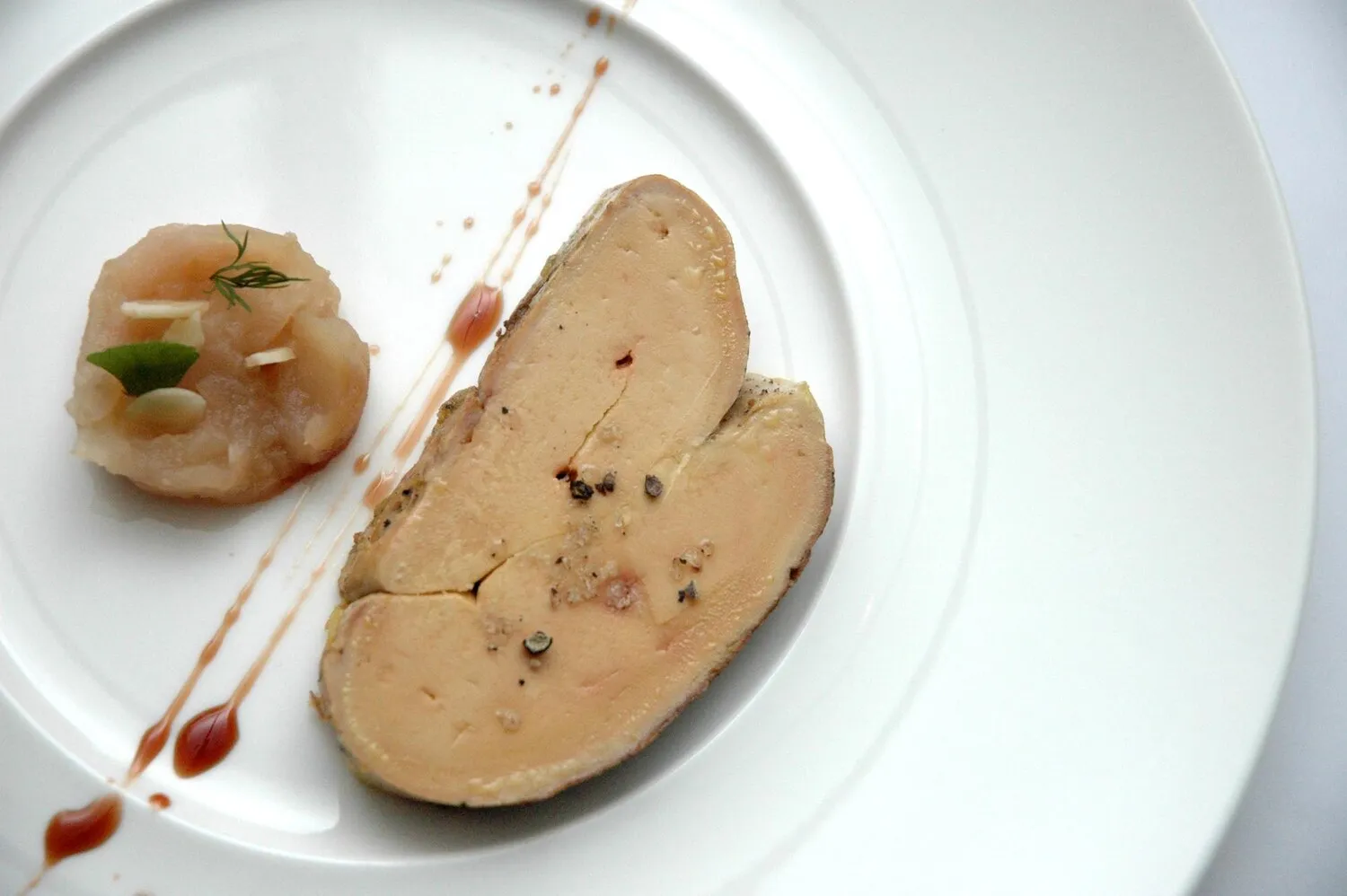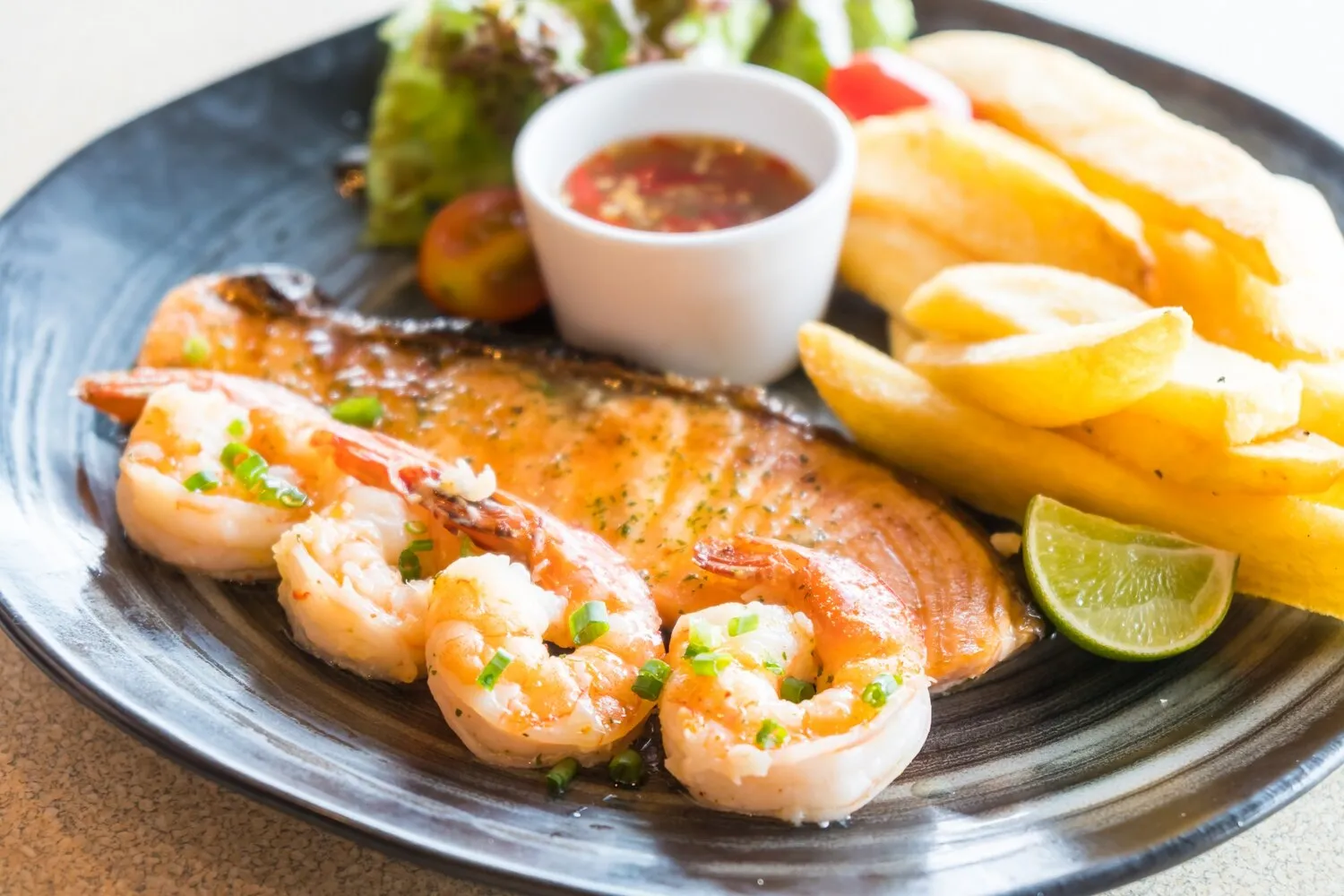
Foie Gras (Preparation varies)
Foie gras is a popular item. The preparation method and accompaniments likely change based on the season or chef's inspiration.
Nutrition Facts
* The % Daily Value (DV) tells you how much a nutrient in a serving of food contributes to a daily diet. 2,000 calories a day is used for general nutrition advice.
Foie gras, meaning 'fat liver' in French, has a history dating back to ancient Egypt, where the practice of force-feeding birds to fatten their livers was documented. The Romans also adopted this practice. However, it was in France, particularly in regions like Alsace and Périgord, that foie gras evolved into the delicacy we know today, becoming deeply ingrained in French gastronomy over centuries.
Foie gras is deeply embedded in French culinary culture, often associated with luxury, celebration, and fine dining. It represents a mastery of technique and a dedication to high-quality ingredients. However, its production methods have also made it a controversial topic.
Festive Occasions
Foie gras is a staple during festive occasions such as Christmas and New Year's Eve in France. It's often served as an appetizer and is considered a symbol of indulgence and celebration.
Gastronomic Heritage
Foie gras is recognized as part of France's gastronomic heritage, representing a traditional culinary skill and ingredient that has been refined over generations.
Ethical Debate
The production of foie gras, specifically the force-feeding method, has been the subject of ethical debate and legal challenges in various countries, raising concerns about animal welfare.
Foie gras is celebrated for its rich, buttery, and delicate flavor profile. Its texture is smooth and melts in the mouth, offering a luxurious culinary experience. The specific flavors can be influenced by the preparation method and accompaniments.
The primary flavor is intensely rich and fatty, with a subtle sweetness. High-quality foie gras should not taste livery or metallic. Depending on the preparation (e.g., pan-seared, terrine, pâté), there might be nuances of nutty, earthy, or even slightly sweet notes. Accompaniments like fruit preserves (fig jam, quince paste), sweet wines (Sauternes), and toasted brioche enhance the foie gras's inherent flavors by providing contrasting textures and complementary sweetness or acidity.
Scoring Before Searing
Lightly score the surface of the foie gras before searing. This helps render the fat evenly and prevents it from curling up in the pan.
Cold is Key
Ensure the foie gras is very cold before searing. This will help it maintain its shape and prevent it from melting too quickly.
Don't Overcrowd the Pan
Sear the foie gras in small batches to avoid overcrowding the pan. Overcrowding will lower the pan's temperature and result in steamed, rather than seared, foie gras.
Perfect Doneness
The foie gras is perfectly cooked when it is golden brown and slightly yielding to the touch. Avoid overcooking, as it will become greasy and lose its delicate texture.
Explore additional Classic French dishes and restaurants
Explore Classic FrenchDiscover top dining spots and culinary experiences in Chambéry.
Explore ChambéryLearn more about the food culture, restaurant scene, and culinary heritage of France.
Explore France
